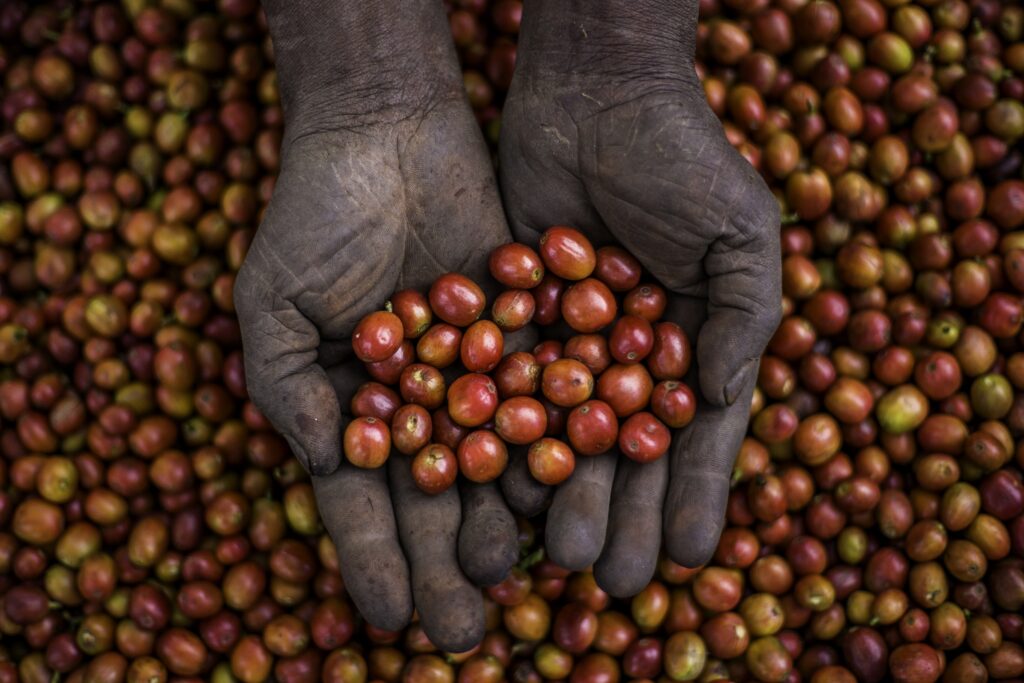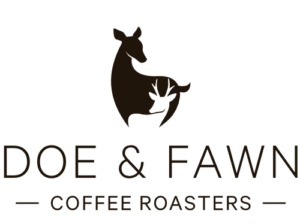The Coffee C Market is a complicated but fascinating topic that is easy to understand. It is also a highly timely topic, as coffee prices have been incredibly volatile and are currently at all-time high levels.
The C price represents the exchange rate. It is determined in real time as transactions are executed.
These transactions involve persons buying and selling contracts from one another, with the exchange facilitating the transaction.
In its most basic form, the exchange works like so:
- Producers will offer up their lots of coffee to the exchange for delivery.
- The exchange buys them at its rate and takes them into its warehouses (these become “certified stocks”).
- Buyers may then purchase coffee from the exchange’s “certified stocks”, once again at the exchange rate.
While not without its own set of challenges, this has a number of applications in the supply chain.
The exchange will always buy coffee, so even when there is an oversupply, the farmer will always find a customer. Similarly, the exchange should always have coffee for sale.
This serves to stabilise the world’s coffee supply, guaranteeing a consistent flow of commodities even during a large oversupply or undersupply.
External forces continue to have a greater influence on the market than ever before; wars and conflicts always result in volatility and uncertainty for all commodities and currencies. Shipping remains a challenge, and America’s recent talk of tariffs has scared all commodities markets.
Understanding recent C market movements
The C price is the global benchmark for the price of green arabica beans. At its most basic level, it’s determined by supply and demand:
- If there is a shortage of coffee, the price will go up (and may become too high that fewer people buy coffee)
- If there is a lot of coffee available, the price will fall (and more people will buy higher volumes to capitalise on lower prices)
There are, however, a multitude of other complex factors that also influence the market price for coffee – meaning the supply-demand balance isn’t as straightforward as we think.
Karl Wienhold is a researcher and PhD Candidate at the University of Lisbon. He also authored Cheap Coffee: Behind the Curtain of the Global Coffee Trade, which explores the economics and power imbalance of the coffee industry.
“If traders expect that the price of coffee will go up, they may buy more futures contracts in the hopes of selling them at a higher price down the line, which drives the price up,” he explains. The inverse is also true; if buyers speculate that prices will drop, they will sell more futures contracts so the current price will fall.
Because of this speculation, the C price is in constant fluctuation. Additionally, adverse weather conditions, geo-political factors, and supply chain disruptions can all have their own effect.
With no end in sight to high coffee prices, the market will continue to shift. Once it settles, however, roasters will have to navigate a markedly different green coffee-buying landscape.
Uncertainty seems to be an underlying factor in the current market, and it will likely continue that way for the foreseeable future. For now, how exactly roasters will adapt once the C price drops remain to be seen.
We acknowledge that the text and information shared here are curated from publicly available resources. Our aim is to compile and present these materials in a simplified format for learning and awareness, with full credit to the original sources listed.

